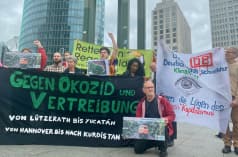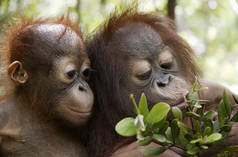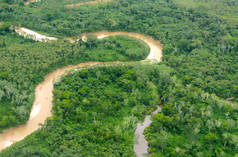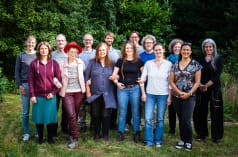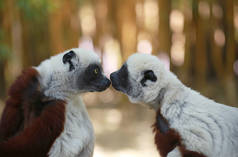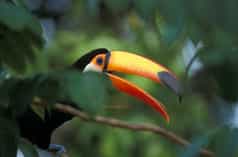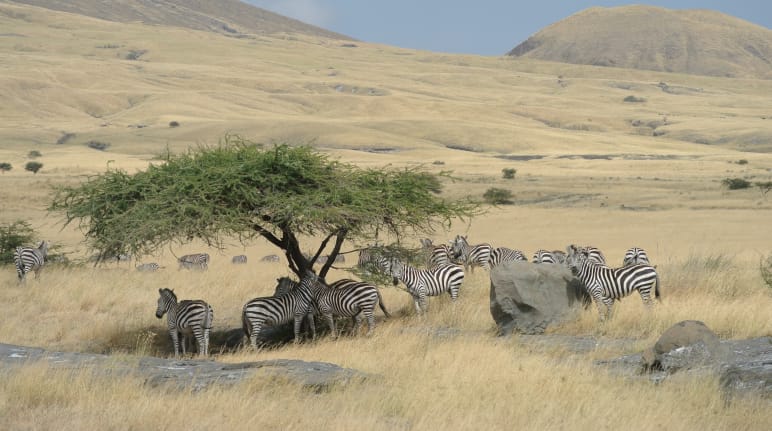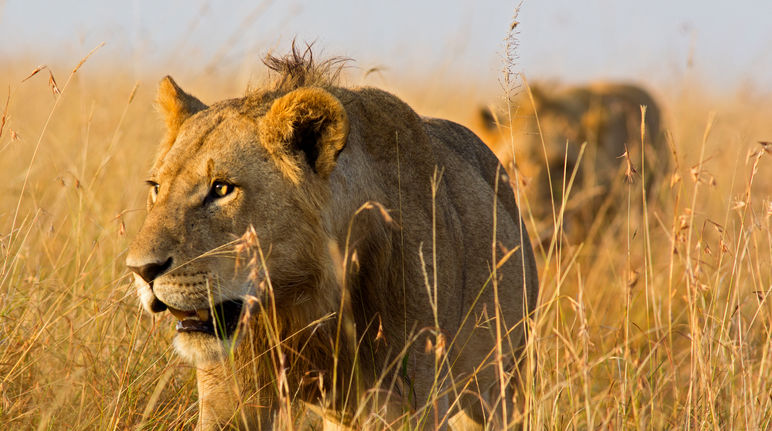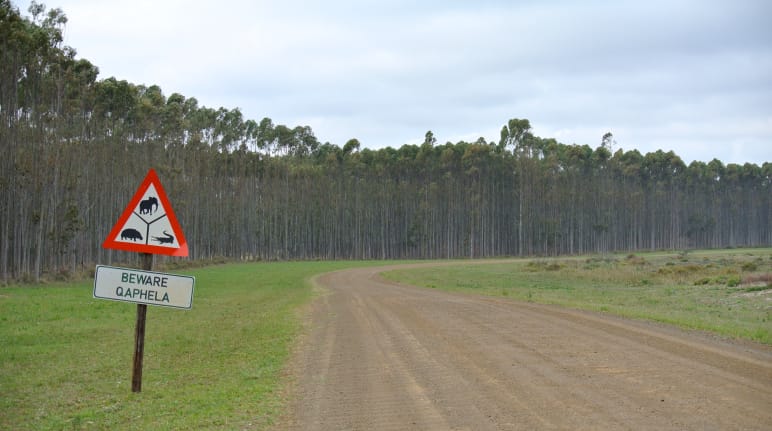Protect savannas: NO to misguided “reforestation”!
Forests are true climate saviors, and it’s vital that we conserve or restore them. However, many misguided projects – such as planting trees in grasslands such as savannas – do little for the climate and cause serious damage to local ecosystems. Protecting existing forests should be a top priority for tackling the climate crisis.
Call to actionTo: the German government and other parties involved in the AFR100 program
“Reject poorly conceived tree planting projects. Preserving existing forests is the better way to protect the climate and biodiversity.”
Planting trees is a popular way to protect the climate. Governments are currently outbidding each other to plant billions of new trees.
The African Forest Landscape Restoration Initiative (AFR100) aims to restore 100 million hectares of supposedly degraded land. In reality, however, these initiatives often pay no heed to local ecosystems and plant trees where they are ecologically inappropriate.
Savannas and grasslands are not degraded forests, but diverse ecosystems in their own right.
A recent scientific study now supports the warnings of environmentalists. It found that 52 percent of AFR100 afforestation projects are planned in savannas. In almost 60 percent of cases, non-native species such as eucalyptus are to be planted.
The negative consequences are far-reaching: plant species that do not tolerate the shade of trees can be displaced, which has knock-on effects that threaten the habitat and food supply for wildlife. In addition to insects and birds, larger species such as rhinos and wildebeests can be affected. "Thirsty” trees also affect the local water balance, which in turn can impact the living conditions of local communities.
According to the study, 70 million hectares in Africa – an area larger than the US state of Texas or nearly three times the size of the UK – are at risk. Brazil and India are similarly threatened according to the study’s authors.
In the face of the climate and biodiversity crises, the conservation of existing forests, savannas and other ecosystems is crucial. Indigenous peoples can play a central role here as guardians of their ancestral lands.
Reforestation also has an important role to play. However, such projects must be custom-tailored to the local ecosystem and contribute to the protection of biodiversity.
In short: Conserving existing forests must have priority over misguided tree planting projects.
BackgroundStatements from the researchers
Lead author of the study is Dr. Kate Parr, Professor of Tropical Ecology in the School of Environmental Sciences, University of Liverpool. In a press release from the University of Liverpool, Parr is quoted as saying:
“Restoration of ecosystems is needed and important, but it must be done in a way that is appropriate to each system.
“Non-forest systems such as savannas are misclassified as forest and therefore considered in need of restoration with trees.
“There is an urgent need to revise definitions so that savannas are not confused with forest because increasing trees is a threat to the integrity and persistence of savannas and grasslands.
“Highlighting this issue now means there is still time to negate this threat and ensure that non-forest systems receive appropriate restoration.”
Dr Nicola Stevens, Trapnell Research Fellow in African Environments at Oxford University and co-author of the study, said:
“The urgency of implementing large-scale tree planting is prompting funding of inadequately assessed projects that will most likely have negligible sequestration benefits and cause potential social and ecological harm.”
What is AFR100 and the Bonn Challenge?
The African Forest Landscape Restoration Initiative (AFR100) was launched during the 2015 UN Climate Change Conference in Paris. Its goal was to restore 100 million hectares of ecologically degraded land through reforestation, natural regeneration and other forms of restoration by 2030. The target has since been increased to 130 million hectares. 33 African countries are participating in AFR100.
Major donors include the German government, the United Nations, the World Bank and Bezos Earth Fund.
AFR100 is a contribution to the Bonn Challenge, launched in 2011 under the auspices of Germany. It aims to restore 350 million hectares of degraded and deforested land by 2030. In addition to AFR100, there are three other regional initiatives: ECCA30 in Europe, the Caucasus and Central Asia, Initiative 20x20 in Latin America and the Caribbean and the Agadir Commitment in the Mediterranean.
Response from AFR100
A spokesperson for AFR100 criticized the Science study, telling New Scientist that the initiative has made it clear that grasslands should not be converted to forests. “AFR100 supports a range of approaches to restore health to Africa’s land, so that people and nature can thrive,” they said.
“The authors of this article mistakenly equate restoration with reforestation and assume that AFR100 focuses solely on the latter, which is untrue. For example, agroforestry projects add trees to existing croplands to improve soil fertility, increase water retention and reduce topsoil erosion. Agroforestry practices do not convert farms to forests. These agroforestry projects make up the vast majority of restoration projects affiliated with AFR100 today and must be included in any fair assessment of AFR100.”
Other criticisms of tree planting projects
Environmentalists criticize the fact that industrial plantations of alien species such as eucalyptus and acacia are being established under the guise of afforestation. These generate profits for the pulp and paper pulp industry, but the ecological value of these monocultures is close to zero. The trees are cut down after a few years and the climate hardly benefits. Mozambique is a cautionary tale in this regard.
Tree planting programs can also lead to land grabbing. Degraded land that could be used for planting trees often does not exist in the required quantity. In many cases, the land has been used by local communities for generations for small-scale agriculture. Reforestation can therefore threaten their livelihoods and food security.
The fundamental question: What is a forest?
Rainforest Rescue has criticized the United Nations Food and Agriculture Organization (FAO) definition of forests for many years. Specifically, the FAO considers a forest to be
- a land area of 0.5 hectares or more
- with canopy cover of more than 10 percent
- with trees higher than 5 meters
By this definition, many savannas are considered forests and thus candidates for “reforestation”. It also ignores the diversity of ecosystems and includes ecologically worthless plantations. The FAO describes tree monocultures as “planted forests.”
Forests are not just groups of trees, but diverse ecosystems and habitats of many species of animals and plants. Millions of people rely on them for their livelihoods.
Value and characteristics of grasslands
Grasslands rival many forests in terms of biodiversity. The secret of grasslands lies below the surface, where plants store most of their biomass, and therefore carbon, in rootstocks and tubers.
Grasslands are found on all continents. Savannas, a tropical variant, cover 15 percent of the Earth’s surface. But there is no such thing as a uniform savanna. Instead, scientists distinguish myriad forms, from grass to tree savannas, and from dry to wet savannas. What they all have in common is the competition between grass and trees – open landscape versus shady forest. Many of today’s savannas have existed for millions of years: They are not sad remnants left over from deforestation, but the original ecosystems adapted to natural conditions.
Forests and savannas as climate protectors
Forests and savannas store large amounts of carbon and are therefore important for climate protection. Learn more about the storage capacity of different ecosystems:
To: the German government and other parties involved in the AFR100 program
Dear Federal Development Minister Svenja Schulze,
Ladies and Gentlemen,
Natural forests are true climate saviors. In the face of the climate crisis, they must be preserved or restored. However, many reforestation projects do little to help the climate, and in fact cause damage: It is ecologically harmful to plant trees in grasslands like savannas.
A recent study published in Science analyzed the extent of this undesirable development using AFR100 as an example. The scale is alarming: According to the study, 52 percent of AFR100 reforestation projects are planned in savannas. In nearly 60 percent of cases, non-native species such as eucalyptus are to be planted. According to the study, 70 million hectares in Africa – an area larger than the US state of Texas or nearly three times the size of the UK – are at risk. Brazil and India are similarly threatened.
The German government and all those involved in AFR100 must take these warnings seriously and subject reforestation projects to careful scrutiny.
Do not waste money on harmful projects that distract from effective climate action and threaten biodiversity.
Yours faithfully,
The title of the study (paywall) is:
Conflation of reforestation with restoration is widespread
Across Africa, vast areas of nonforest are threatened by inappropriate restoration in the form of tree planting
Lead author is Kate Parr, PhD, Professor of Tropical Ecology in the School of Environmental Sciences, University of Liverpool. Co-authors are Dr. Nicola Stevens, Trapnell Research Fellow in African Environments at Oxford University, and Dr. ir. Mariska te Beest, Associate Professor at Utrecht University.
Various media have reported on the study and its findings:
https://www.spektrum.de/news/wiederaufforstung-in-afrika-zerstoererisches-baeumepflanzen/2207528
This petition is also available in the following languages:
Help us reach 100,000:
